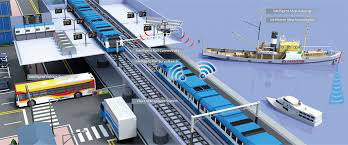D Y Patil International University, Akurdi, Pune
Search results: 1884

Aim(s) - The aim of learning information architecture as a module for design students is to equip them with the knowledge and skills necessary to create effective and user-centered information structures in various design contexts.
Objective(s) -
To understand the role of information architecture in design and its importance in organizing and structuring information for effective communication and user experience.
To develop user-centered design skills by conducting user research, understanding user needs, and incorporating usability principles into information architecture design.
To learn various techniques for organizing and classifying information, including hierarchical structures, faceted classification, metadata, and other methods that facilitate efficient information retrieval and navigation.
To apply fundamental design principles such as layout, typography, color, and composition to create visually appealing and readable information architectures.
To develop skills in content strategy and information design, including creating content hierarchies, meaningful taxonomies, and structuring content for different contexts and devices.
Detailed Syllabus
Session No. | Topic & Sub-Topic | Duration (hrs.) |
Information, data, complexity, uncertainty | 5 | |
Information systems, mapping information systems | 5 | |
Information processing, information ecology, principles of cognitive psychology, memory, cognitive load | 5 | |
Information Architecture, taxonomies and hierarchies of information | 10 | |
Grouping and classifying content, naming and labeling content, structures, information priority | 10 | |
5 different IA models - Hierarchical trees, Nested lists, Hub-and-Spoke, Bento Box, Filtered view, choosing and combining models | 10 | |
Navigation Design, primary, secondary, global and local navigation. | 5 | |
Building a sitemap for a website/app | 5 | |
Testing and validating IA | 5 | |
Total hrs. | 60 hrs. |
(Please add the number of rows as required to the Table above)
`Prerequisite/s-
Understanding of Design Principles: Familiarize yourself with fundamental design principles such as layout, typography, color theory, and composition. This knowledge will provide a solid basis for creating effective information structures.
Knowledge of User Experience (UX) Design: Gain an understanding of UX design principles, including user research, wireframing, prototyping, and usability testing. UX design is closely related to information architecture and helps ensure that the information structures you create are user-centered and intuitive.
Information Organization and Classification: Learn about different methods of organizing and classifying information, such as hierarchical structures, faceted classification, and metadata. Understanding these concepts will help you design effective information architectures that enable users to find and navigate information easily.
Content Strategy and Information Design: Explore the principles of content strategy and information design. This involves understanding how to structure and present information in a clear, coherent, and meaningful way.
User Research Techniques: Familiarize yourself with user research methods, such as interviews, surveys, and usability testing. User research helps you gain insights into user needs, behaviors, and preferences, which are crucial for designing information architectures that meet user requirements.
Data Visualization: Develop skills in data visualization to effectively present complex information in a visual and understandable format. This can involve learning about chart types, data storytelling, and information graphics.
Collaboration and Communication Skills: Information architecture often involves working with cross-functional teams and stakeholders. Enhance your collaboration and communication skills to effectively convey your ideas, understand user requirements, and work in a team environment.
Mode of submission : Soft Copies
- Teacher: Mr Krishna Kumar
- Teacher: Mr Krishna Kumar
- Teacher: Ms.Nikita Pagar
- Teacher: Dr Swapnil Waghmare
- Teacher: Dr. Maheshwari Biradar
- Teacher: Mr. Yash Sanjay More
- Teacher: Dr. Rahul Sharma
- Teacher: Dr Swapnil Waghmare
- Teacher: Ms. Neha Dubey
- Teacher: Dr Ananya Mehta
- Teacher: Ms. Pragati Pallavi

MBA-DB
SEMIV
SCM 406 Intelligent Transport Systems
- Teacher: Mr. Ashwin Agarwal
Presentation Should be Uploaded by Each Members.
- Teacher: Ms Rupali Gupta
- Teacher: Maithili Salgaokar
- Teacher: Dr. Palash Bairagi
- Teacher: Ms Sandhya S Jawale
- Teacher: Mrs Remya Praveen
- Teacher: Mr Tosheet Hedaoo
- Teacher: Ms Vaishali Kumar
- Teacher: Dr. Bahubali Shiragapur
- Teacher: Mr Ajinkya Kothavade
- Teacher: Ms Vaishali Kumar
- Teacher: Mr Riteshkumar Sale
- Teacher: Dr. Rahul Sharma
- Teacher: Mr Jeevraj S Bhalerao
- Teacher: Ms Shruti Bir
- Teacher: Mr Ketan M Deore
- Teacher: Mr Krishna Kumar
- Teacher: Mr Aziz M Poonawala
- Teacher: Ms. Monika Sharma
- Teacher: Ms Sri Gayathri Vedula
- Teacher: Mr Jeevraj S Bhalerao
- Teacher: Ms Shruti Bir
- Teacher: Mr Ketan M Deore
- Teacher: Mr Krishna Kumar
- Teacher: Mr Aziz M Poonawala
- Teacher: Ms. Monika Sharma
- Teacher: Ms Sri Gayathri Vedula
- Teacher: Dr. Sirshendu Arosh
- Teacher: Dr. Sanjay Badhe
- Teacher: Mrs. Shweta Banait
- Teacher: Dr Dipti chandra
- Teacher: Dr. Somya Dubey
- Teacher: Varshita Gangadhar
- Teacher: Sulaxan Jadhav
- Teacher: Dr.Vaishnaw Kale
- Teacher: Mr Shrikant Mahindrakar
- Teacher: Mr. Yash Sanjay More
- Teacher: Mrs Smita S Pawar
- Teacher: Dr. Dipika Pradhan
- Teacher: Dr Rishikant Rajdeepak
- Teacher: Dr. Samarjit Roy
- Teacher: Varsha Sambhaje
- Teacher: Dr. Kapil Sharma
- Teacher: Dr. Rahul Sharma
- Teacher: Dr. Bahubali Shiragapur
- Teacher: Dr. Gaurav Kumar Singh
- Teacher: Mr Pulkit Tiwari
